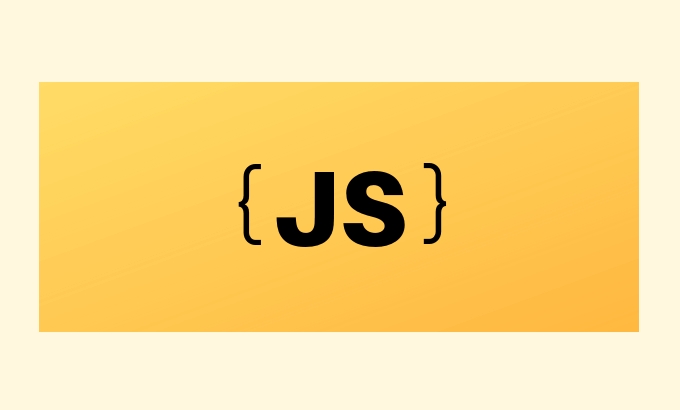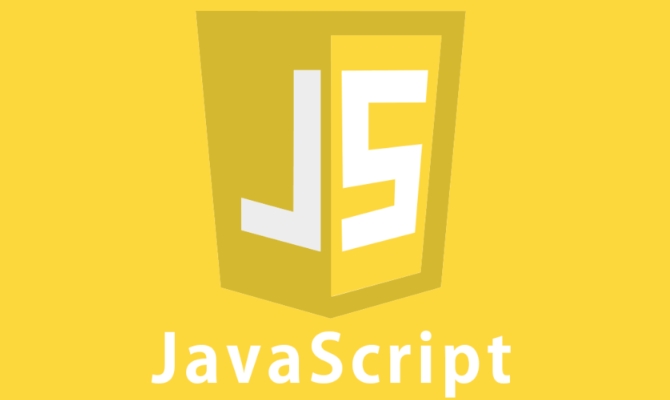比較JavaScript中的功能編程和麵向對象的編程
功能性編程(FP)適用於數據不可變場景,強調純函數和無副作用,適合處理數據轉換如數組映射或過濾;面向對象編程(OOP)適用於建模現實世界實體,通過類和對象封裝數據與行為,適合管理具有狀態的對像如銀行賬戶;JavaScript支持兩者結合使用,根據需求選擇合適範式以提升代碼質量。 1. FP適合數據變換、狀態不變的場景,便於測試與調試。 2. OOP適合建模具身份和內部狀態的實體,提供良好的組織結構。 3. JavaScript允許混合使用FP與OOP,利用各自優勢提高可維護性。

Functional programming and object-oriented programming (OOP) are two of the most common paradigms used in JavaScript. While JavaScript is a multi-paradigm language that supports both, each approach has its own strengths and best-use cases. If you're trying to decide which one to use or understand when each makes more sense, here's a breakdown based on real-world usage and practical considerations.

When Immutability Matters: Functional Programming Shines
Functional programming emphasizes pure functions, immutability, and avoiding side effects. This makes it particularly useful when dealing with predictable transformations of data — think operations like filtering, mapping, or reducing arrays.

- Pure functions always return the same output for the same input, making them easier to test and debug.
- Immutable data means you don't accidentally change state somewhere else in your app, which can be a big win in complex logic or asynchronous flows.
For example, using Array.prototype.map() to transform a list without changing the original array fits the functional style perfectly.
If you're working with libraries like React, especially when using hooks and Redux, functional patterns are often encouraged because they help manage state in a more predictable way.

Modeling Real-World Entities? OOP Might Be Better
Object-oriented programming revolves around objects that encapsulate both data (properties) and behavior (methods). It's great when modeling things that have identity and internal state — like users, products, or UI components.
- Classes in JavaScript provide a clean structure for creating multiple instances with shared behavior.
- Encapsulation allows you to hide implementation details and expose only what's needed through methods.
Take a BankAccount class as an example: it might have properties like balance and methods like deposit() and withdraw() . These actions directly modify the internal state of a specific instance — something that feels natural in OOP.
In large applications with complex domain models, OOP can offer better organization and maintainability by grouping related data and functionality together.
Mixing Both Styles Is Totally Fine in JavaScript
One of the biggest advantages of JavaScript is that it doesn't force you into one paradigm. In fact, many projects use a mix of both functional and object-oriented techniques depending on the context.
- You might define classes to represent entities but use functional utilities to process collections of those entities.
- Libraries like Lodash or Ramda bring functional tools into any codebase, even if it's mostly OOP-driven.
This flexibility means you don't have to pick one over the other. Instead, choose the right tool for the job at hand:
- Use FP for data transformation pipelines.
- Use OOP for modeling entities with behavior and state.
- Combine them where it improves readability and maintainability.
Basically, neither functional nor object-oriented programming is universally better in JavaScript. They solve different kinds of problems well, and knowing when to lean into each will make your code cleaner and more effective.
以上是比較JavaScript中的功能編程和麵向對象的編程的詳細內容。更多資訊請關注PHP中文網其他相關文章!

熱AI工具

Undress AI Tool
免費脫衣圖片

Undresser.AI Undress
人工智慧驅動的應用程序,用於創建逼真的裸體照片

AI Clothes Remover
用於從照片中去除衣服的線上人工智慧工具。

Clothoff.io
AI脫衣器

Video Face Swap
使用我們完全免費的人工智慧換臉工具,輕鬆在任何影片中換臉!

熱門文章

熱工具

記事本++7.3.1
好用且免費的程式碼編輯器

SublimeText3漢化版
中文版,非常好用

禪工作室 13.0.1
強大的PHP整合開發環境

Dreamweaver CS6
視覺化網頁開發工具

SublimeText3 Mac版
神級程式碼編輯軟體(SublimeText3)
 用 C++ lambda 表達式實作函數式程式設計有什麼好處?
Apr 17, 2024 am 10:18 AM
用 C++ lambda 表達式實作函數式程式設計有什麼好處?
Apr 17, 2024 am 10:18 AM
C++lambda表達式為函數式程式設計帶來了優勢,包括:簡潔性:匿名內嵌函數,提升程式碼可讀性。程式碼重用:可傳遞或儲存lambda表達式,方便重複使用程式碼。封裝:提供封裝程式碼段的方法,無需建立單獨函數。實戰案例:過濾列表中的奇數。計算列表中元素的總和。 lambda表達式實現了函數式程式設計的簡潔性、可重複使用性和封裝性。
 PHP擴充開發:如何設計自訂函數以支援物件導向程式設計?
Jun 01, 2024 pm 03:40 PM
PHP擴充開發:如何設計自訂函數以支援物件導向程式設計?
Jun 01, 2024 pm 03:40 PM
PHP擴充功能可以支援物件導向編程,透過設計自訂函數來建立物件、存取屬性和呼叫方法。首先建立自訂函數實例化對象,然後定義取得屬性和呼叫方法的函數。在實戰中,我們可以自訂函數來建立一個MyClass對象,取得其my_property屬性,並呼叫其my_method方法。
 如何利用懶惰求值優化Golang函數式程式?
Apr 16, 2024 am 09:33 AM
如何利用懶惰求值優化Golang函數式程式?
Apr 16, 2024 am 09:33 AM
透過使用惰性資料結構,可以在Go語言中實現惰惰求值:建立一個包裝器類型,封裝實際值,僅在需要時才計算。在函數式程式中最佳化斐波那契數列的計算,延後中間值的計算,直到實際需要。這可以消除不必要的開銷,提高函數式程式的效能。
 golang函數在物件導向程式設計中高並發場景下的應用
Apr 30, 2024 pm 01:33 PM
golang函數在物件導向程式設計中高並發場景下的應用
Apr 30, 2024 pm 01:33 PM
在物件導向編程的高並發場景中,函數在Go語言中具有廣泛應用:函數作為方法:函數可附加到結構體,實現物件導向編程,方便操作結構體資料和提供特定功能。函數作為並發執行體:函數可作為goroutine的執行體,實現並發任務執行,提升程式效率。函數作為回調:函數可作為參數傳遞給其他函數,在特定事件或操作發生時被調用,提供靈活的回調機制。
 C++ 函式與物件導向程式設計有何不同?
Apr 11, 2024 pm 09:12 PM
C++ 函式與物件導向程式設計有何不同?
Apr 11, 2024 pm 09:12 PM
函數和物件導向程式設計(OOP)在C++中提供了不同的程式機制:函數:獨立的程式碼區塊,專注於執行特定任務,不包含資料。 OOP:基於物件、類別和繼承,將資料和行為封裝在物件中。實戰案例中,計算正方形面積的函數方式簡單直接,而OOP方式封裝了資料和行為,更適合管理物件互動。選擇合適的方法取決於場景:函數適用於獨立任務,OOP適合管理複雜物件互動。
 golang函數式程式設計的常見錯誤與陷阱
Apr 30, 2024 pm 12:36 PM
golang函數式程式設計的常見錯誤與陷阱
Apr 30, 2024 pm 12:36 PM
在Go中使用函數式程式設計時需要注意五個常見錯誤和陷阱:避免引用意外修改,確保傳回新建立的變數。解決並發性問題,使用同步機製或避免捕獲外部可變狀態。謹慎使用偏函數化,以提高程式碼可讀性和可維護性。始終處理函數中的錯誤,確保應用程式的健全性。考慮效能影響,使用內聯函數、扁平化資料結構和操作批次來最佳化程式碼。
 golang函數式程式設計的最佳實踐是什麼?
May 01, 2024 am 11:15 AM
golang函數式程式設計的最佳實踐是什麼?
May 01, 2024 am 11:15 AM
函數式程式設計在Go語言中的最佳實踐包括:避免可變狀態,提高可預測性和平行潛力。使用不可變資料結構,防止意外修改並增強並發安全性。利用高階函數,建立可重複使用和可組合的程式碼。使用惰性求值,優化處理大量資料的操作效能。實踐其他推薦模式,提升程式碼品質、可讀性和穩健性。
 Java 函數與其他函數式程式語言相比有哪些優點和缺點?
Apr 24, 2024 pm 02:51 PM
Java 函數與其他函數式程式語言相比有哪些優點和缺點?
Apr 24, 2024 pm 02:51 PM
Java函數式程式設計優點包括簡潔性、可組合性、並發性、測試友善性和效能。缺點包括學習曲線、調試困難、靈活性受限和效能開銷。其關鍵特性包括不含副作用的純函數、資料處理管道、無狀態碼和高效的流API。







